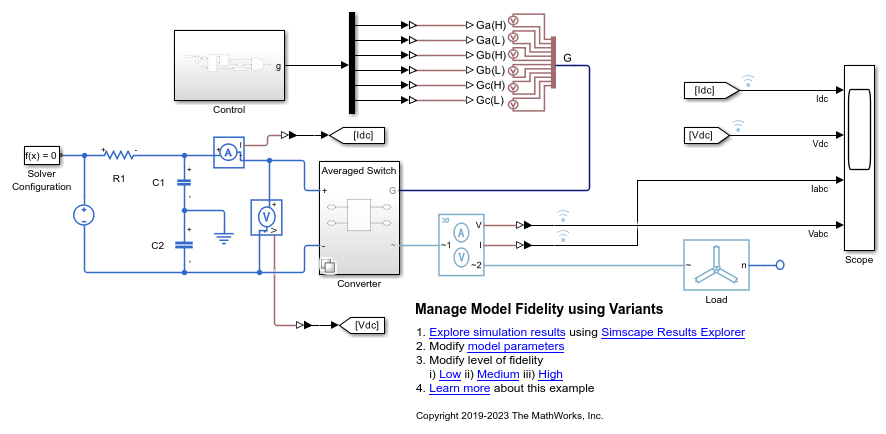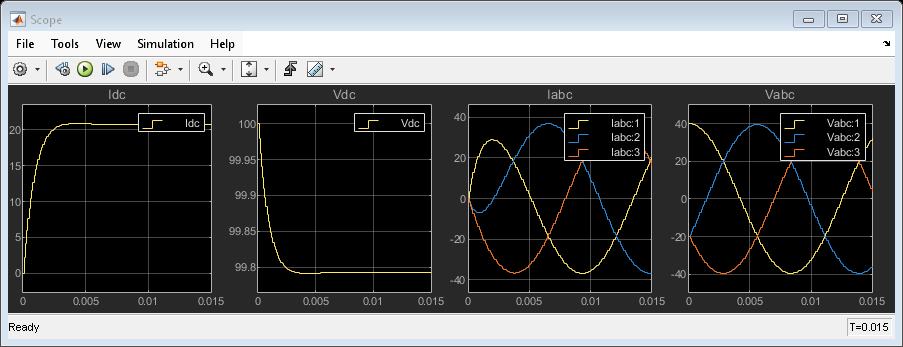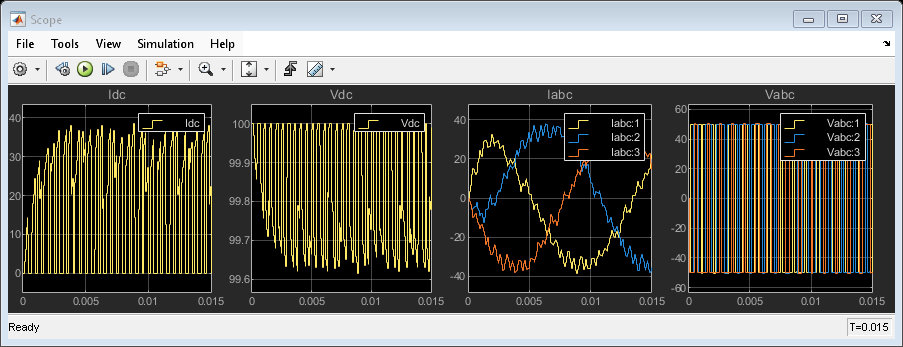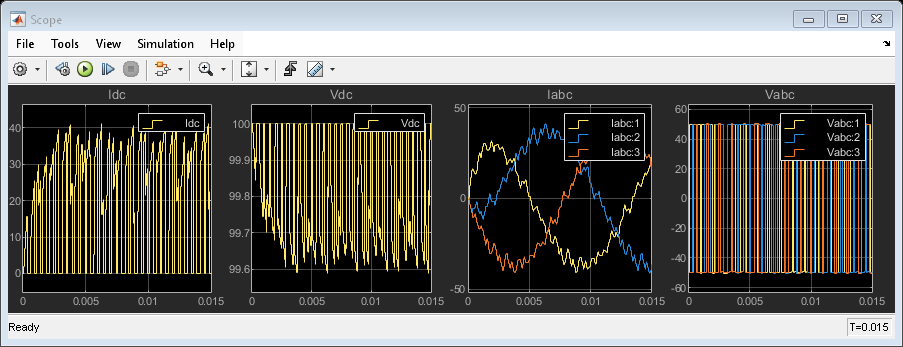Manage Model Fidelity Using Variants
This example shows how to compare and contrast modeling different fidelity levels by using variants. The controller model uses a Variant Source block configured in Expression mode. The plant model uses a Variant Subsystem.
To permit easy interaction, this example demonstrates the commands you must type to configure the model from the command line.
Top-level Model

Controller Variants
Create variant controls for the converter controller. The controller has three different levels of fidelity: Averaged, AveragedPulse, and Pulse.
Averaged = Simulink.Variant;
Averaged.Condition = 'fidelity==FidelityVariantsEnum.Low';
AveragedPulse = Simulink.Variant;
AveragedPulse.Condition = 'fidelity==FidelityVariantsEnum.Medium';
Pulse = Simulink.Variant;
Pulse.Condition = 'fidelity==FidelityVariantsEnum.High';
Plant Variants
Create variant controls for the converter plant. The plant has two different levels of fidelity.
AveragedSwitch = Simulink.Variant;
AveragedSwitch.Condition = 'fidelity==FidelityVariantsEnum.Low || fidelity==FidelityVariantsEnum.Medium';
IdealSwitch = Simulink.Variant;
IdealSwitch.Condition = 'fidelity==FidelityVariantsEnum.High';
Averaged Control Output, Averaged Switch Converter
Configure the model to run in low fidelity with a timestep of 100us.
fidelity = FidelityVariantsEnum.Low; Ts = 1e-4;


Averaged Pulse Control Output, Averaged Switch Converter
Configure the model to run in medium fidelity with a timestep of 50us.
fidelity = FidelityVariantsEnum.Medium; Ts = 5e-5;


Pulse Control Output, Ideal Switch Converter
Configure the model to run in high fidelity with a timestep of 10us.
fidelity = FidelityVariantsEnum.High; Ts = 1e-5;


Results from Real-Time Simulation
This example, with level of fidelity set to Low and Medium, has been tested on a Speedgoat Performance real-time target machine with an Intel® 3.5 GHz i7 multi-core CPU. This model can run in real time with a step size of 50 microseconds.
See Also
Converter (Three-Phase) | Six-Pulse Gate Multiplexer